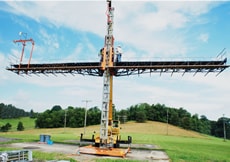Directory of Engineering Controls
Engineering controls protect workers by removing hazardous conditions or by placing a barrier between the worker and the hazard. Examples include local exhaust ventilation to capture and remove airborne emissions or machine guards to shield the worker. Well-designed engineering controls can be highly effective in protecting workers and will typically be independent of worker interactions. They typically do not interfere with worker productivity or personal comfort and make the work easier to perform rather than more difficult. The initial cost of engineering controls can be higher than some other control methods, but over the longer term, operating costs are frequently lower, and in some instances, can provide a cost savings in other areas of the process. To learn more about how engineering controls fit into the strategy for reducing and/or eliminating occupational hazards, visit our hierarchy of controls website.
NIOSH researchers help prevent occupational disease and injury by conducting engineering control technology evaluations and developing practical, solutions-oriented control technology interventions. To conduct these efforts, NIOSH works collaboratively with partners both in the United States and around the world.
This directory page links to NIOSH engineering control related webpages, projects, programs, tools and resources created to improve workplace health and safety.

NIOSH Researchers reduce the risk of fall injuries and fatalities in construction by evaluating mast climber fall-arrest scenarios and providing recommendations to standards committees and equipment manufacturers.
- Best Practices: Engineering Controls, Work Practices, and Exposure Monitoring for Occupational Exposures to Diacetyl and 2,3-Pentanedione
- NIOSH Engineering Controls Program
- OSHA/NIOSH Hazard Alert: Methylene Chloride Hazards for Bathtub Refinishers
- Preventing Hazardous Noise and Hearing Loss during Project Design and Operation
- Reducing Musculoskeletal Disorders among Airport Baggage Screeners and Handlers
- Reducing Hazardous Dust Exposure When Dowel Drilling in Concrete
- Reducing Hazardous Dust Exposure When Cutting Fiber-Cement Siding
